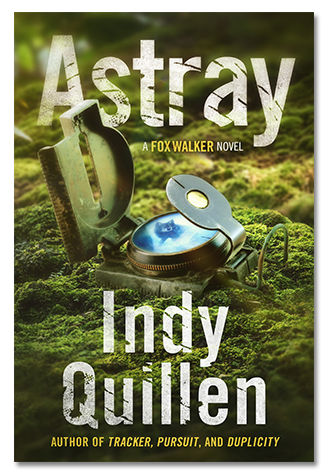I love gardening. And I also love trying new Hacks.
 So it was a given that I wanted to try my hand at growing potatoes in a 5-gallon bucket. First, let me say that I have grown potatoes in the ground. In fact they are growing in my garden as I write this. But there are a couple of reasons why I wanted to try the bucket method.
So it was a given that I wanted to try my hand at growing potatoes in a 5-gallon bucket. First, let me say that I have grown potatoes in the ground. In fact they are growing in my garden as I write this. But there are a couple of reasons why I wanted to try the bucket method.
FIRST: Not everyone has large tracts of land for big gardens.
Some people have small yards and many people only have a patio space. I believe it’s important for people today to have the knowledge and experience of growing some of their own food, even if it’s only potatoes in a bucket. Being self-reliant means keeping some of that knowledge alive that our grandparents knew as everyday life. And container gardens are a way for everyone to grow some foods, even without the land for a garden.
SECOND: How cool to be able to simply turn over a bucket and harvest potatoes?
This part really appealed to me. After digging up potatoes in the past and in the process damaging many, being able to simply turn over the bucket, dump out the dirt and search for potatoes looked like fun. A treasure hunt!
Here are your instructions (4 easy steps with pictures!) for starting your own potato bucket.
Number 1

 You’ll need a 5-gallon bucket that is food grade safe. How do you know? Before you purchase, look for the recycle symbol on the bottom of the bucket. There will be a number located inside the symbol. All food grade safe buckets will be #2 HDPE. If you are reusing a bucket that you already have please check to make sure it is safe for food. And of course, you don’t want to use one that previously had any kind of chemical, paint or oil in it. There are lots of other containers you could use instead of the 5-gallon bucket. Simply make sure they are food grade safe and have excellent drainage. But for this article I’m going to be specifically referring to the standard 5-gallon bucket. It’s easy to find (any hardware store will have them) and inexpensive. I purchased mine at a grocery store that also carries hardware and houseware items.
You’ll need a 5-gallon bucket that is food grade safe. How do you know? Before you purchase, look for the recycle symbol on the bottom of the bucket. There will be a number located inside the symbol. All food grade safe buckets will be #2 HDPE. If you are reusing a bucket that you already have please check to make sure it is safe for food. And of course, you don’t want to use one that previously had any kind of chemical, paint or oil in it. There are lots of other containers you could use instead of the 5-gallon bucket. Simply make sure they are food grade safe and have excellent drainage. But for this article I’m going to be specifically referring to the standard 5-gallon bucket. It’s easy to find (any hardware store will have them) and inexpensive. I purchased mine at a grocery store that also carries hardware and houseware items.
Number 2

 The bucket needs to have excellent drainage, or you might end up with nothing but mush in the bottom of your bucket vs. potatoes. I used a power drill to create ¼” holes in the bottom of the bucket. I also drilled holes on the sides of the bucket near the bottom. That way I knew water wouldn’t be sitting in the bottom of the bucket. To also aid in letting the water drain, I placed small and medium sized river rock (rounded stones) in the bottom of the bucket so that water could seep out of the dirt and through the rocks to the holes. Some people use gravel, but I figured that using the larger stones would make it easier for me to separate the rocks from the dirt when it came time to harvest the potatoes. Then I could use the stones again for the next batch. Once the bucket was filled and planted, I sat the bucket on some smaller rocks to elevate it off the ground. Yeah, I really wanted to make sure any excess water could drain away.
The bucket needs to have excellent drainage, or you might end up with nothing but mush in the bottom of your bucket vs. potatoes. I used a power drill to create ¼” holes in the bottom of the bucket. I also drilled holes on the sides of the bucket near the bottom. That way I knew water wouldn’t be sitting in the bottom of the bucket. To also aid in letting the water drain, I placed small and medium sized river rock (rounded stones) in the bottom of the bucket so that water could seep out of the dirt and through the rocks to the holes. Some people use gravel, but I figured that using the larger stones would make it easier for me to separate the rocks from the dirt when it came time to harvest the potatoes. Then I could use the stones again for the next batch. Once the bucket was filled and planted, I sat the bucket on some smaller rocks to elevate it off the ground. Yeah, I really wanted to make sure any excess water could drain away.
Number 3
You can purchase seed potatoes to plant or you can create your own seed potatoes from store-bought ones. Note: If you are using the organic store-bought variety sometimes clove oil is used on organic potatoes to discourage them from sprouting, so you might want to make sure you get ones that haven’t had that added. You can smell clove oil on the ones that have had it added. Non-organic potatoes might have chemicals added to keep them from sprouting.To create your own seed potatoes, you can use ones that have already started sprouting on their own. Cut a section out of the potato that contains the eye that has started to sprout. It’s good to let the cut piece dry out a bit to form a “skin” on the cut part so it won’t mildew in the dirt. This is your seed potato. Since I already used some Russets seed potatoes from my pantry and planted them in my raised bed garden, I decided to purchase some Yukon Gold seed potatoes. The Yukon Gold is a smaller potato and I hoped it would produce well in the container.
 Fill the bottom part of the bucket with about four inches of soil (I used rich soil mixed with compost) then place your seed potatoes on the dirt and cover up with another couple inches of dirt. The trick is to keep adding your soil medium as the potato plant grows upward. This forces it to keep making more roots (more potatoes). This is why you will see potatoes grown in hills when planted in the ground. Water well, but don’t saturate the soil.
Fill the bottom part of the bucket with about four inches of soil (I used rich soil mixed with compost) then place your seed potatoes on the dirt and cover up with another couple inches of dirt. The trick is to keep adding your soil medium as the potato plant grows upward. This forces it to keep making more roots (more potatoes). This is why you will see potatoes grown in hills when planted in the ground. Water well, but don’t saturate the soil.
As the plant grows, make sure to keep adding soil as needed. You don’t want the roots (potatoes)to be exposed to sunlight (this produces green potatoes which are toxic). Eventually you’ll have added enough soil that the entire bucket will be filled to the top. I leave just enough room to water. At this point you will need to occasionally water and just wait to harvest.




Number 4

 Yukon Gold produce potatoes and are ready to harvest in about 90 days, while other potatoes, such as Russets take up to 120 days. You can tell when they are ready to harvest as the green plant and leaves will simply start turning brown and whither. Some plants may flower first and even get what looks like small tomatoes on them. Tomatoes and potatoes are both from the Night Shade family. But the berries (or little tomatoes) produced by the potato plant are poisonous. So, it’s a good idea to remove them if there are children around the plants.
Yukon Gold produce potatoes and are ready to harvest in about 90 days, while other potatoes, such as Russets take up to 120 days. You can tell when they are ready to harvest as the green plant and leaves will simply start turning brown and whither. Some plants may flower first and even get what looks like small tomatoes on them. Tomatoes and potatoes are both from the Night Shade family. But the berries (or little tomatoes) produced by the potato plant are poisonous. So, it’s a good idea to remove them if there are children around the plants.
I lay out a tarp and turn the bucket upside down on it. First I remove the river stones I had placed at the bottom of the bucket.  Then the fun begins of searching through the dirt for the treasure of potatoes. Once you’ve gathered all your potatoes, simply lightly brush off the loose dirt and they are ready for storage – if they last that long! Store them in a cool, dark place. Do not expose them to sunlight!
Then the fun begins of searching through the dirt for the treasure of potatoes. Once you’ve gathered all your potatoes, simply lightly brush off the loose dirt and they are ready for storage – if they last that long! Store them in a cool, dark place. Do not expose them to sunlight!
The Yukon Golds that I used in my experiment were planted in buckets on May 19 and harvested on July 22. So, I’ll be purchasing or making new seed potatoes and creating two more buckets. As long as I plant again by August, that gives me until the end of October to have another harvest of potatoes ready before winter.
It takes some work for the first time, purchasing materials, drilling the holes and such. But once you’ve done your first crop, you’ve got everything on hand to start again. I bet you’ll be itching to try another batch. And you can use a potato from your first crop to make new seed potatoes for your next crop. How easy is that?
Why are potatoes such an important crop to know how to grow?
Did you know that it is the one food that gives you the most nutrition if you were in a starvation situation? You can actually survive on potatoes—eating nothing else—for quite a while. Whole civilizations have done it. So if you are a self-reliance advocate, like I am, I suggest you at least learn how to grow some potatoes. And being able to grow them in buckets means you can grow them just about anywhere!


 Being outside in nature is the most basic part of who I am. Besides gaining knowledge about wildlife, I learn lessons about who I am, and surprise myself about what I am capable of achieving. Nature continually inspires me. It is a part of all my writings, no matter the genre or subject matter.
Being outside in nature is the most basic part of who I am. Besides gaining knowledge about wildlife, I learn lessons about who I am, and surprise myself about what I am capable of achieving. Nature continually inspires me. It is a part of all my writings, no matter the genre or subject matter. 





I did this for the first time as well. Right now I have about a half a bucket of soil, but my potato plants are growing faster than the others. Is there something I can do to hold the growth or do I just let them go?
Thanks for commenting, Colleen. Yes, the potatoes tend to really take off quickly. I keep adding soil as needed to keep the plants mostly covered- until you can’t add any more because the bucket is full. Remember, the potatoes will be developing in the soil as you add it, so it’s important to have the bucket eventually full. Best Wishes for a great crop!
Wow, Such a nice article. please don’t stop posting keep it up! I am also a gardener lover and write abouthttps://homegardenbloom.com/how-to-grow-potatoes-in-a-bucket/
Thank you for reading and taking the time to comment, Anne. And I appreciate the kind words! I checked out your site and I’m looking forward to reading your articles. Garden on!
Have you ever tried growing potatoes in a bucket with water absorbing polymer beads soaked in hydroponic nutrients and river rock
Hi Charlene – Thanks for reading and commenting! I have not tried that. But one of my neighbors used the polymer beads for her flowers and had good luck. I try to always grow my vegetables organically. Do you know if the beads effect the soil in any way that would make the food non-organic? I will also do some research. Thanks!
How interesting. I have never tried to grow potatoes in a bucket. This would be a great classroom project for teachers.
This was my first attempt and I found it an interesting experiment. Even though I’m growing potatoes the traditional way, in the ground, I liked this idea for people who want to grow some of their own food, but don’t have any yard space for a garden. Most apartments have a balcony or patio where you could set out a bucket or two. It was inexpensive and didn’t take that much effort or materials for the project. You’re right, Jill, it would be a cool teaching tool.I remember growing green beans in elementary school. Today there are children who don’t know what a potato looks like – they only know that french fries are potatoes – a sad truth!